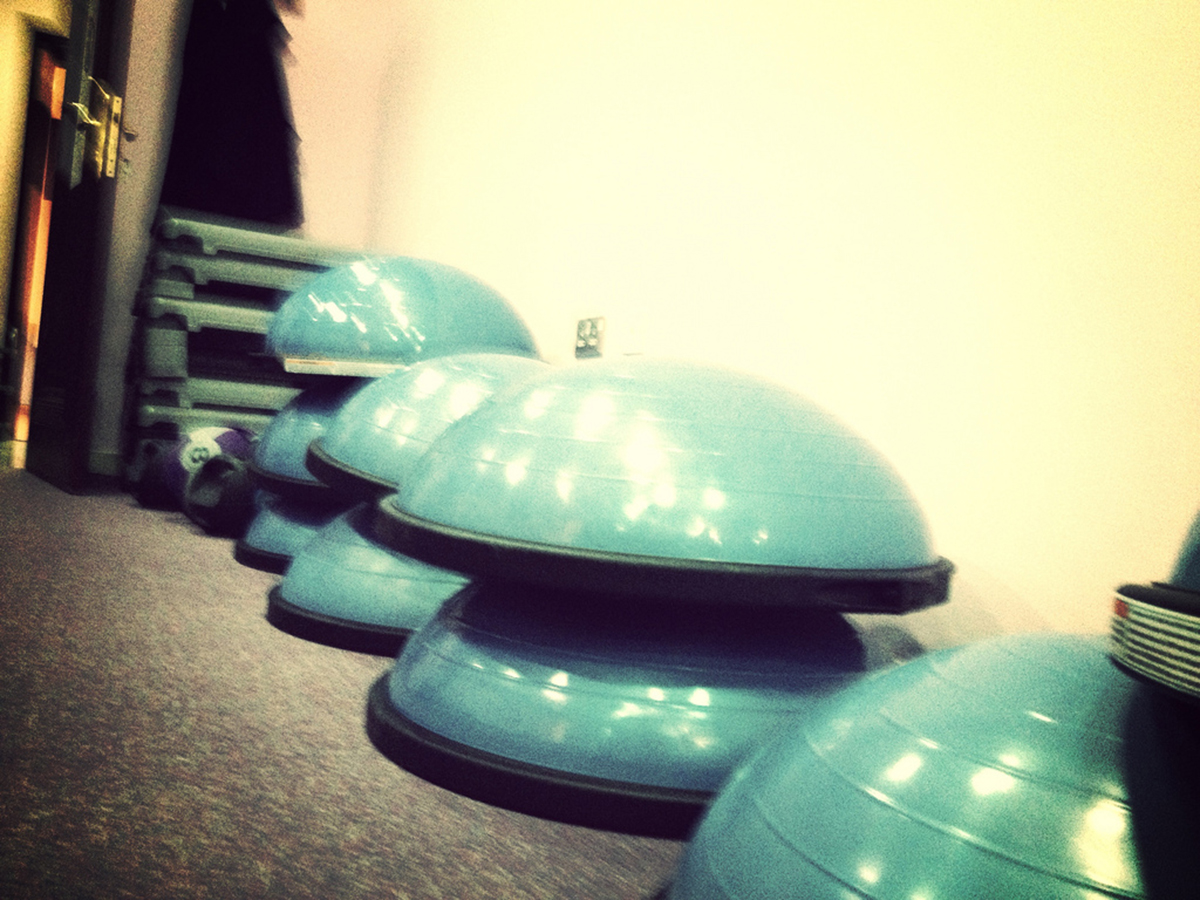Knowing when to make a rehabilitative effort
One of the most commonly purchased pieces of exercise equipment is the bench press. Therefore, the bench press is a commonly practiced attempt at exercise. Even at the gym lifters commonly “wait their turn” to use get a free bench. With constant use of the shoulder complex to control a challenging amount of weight down to the chest and the exertion to press it upward a number of times can take a toll on the joint. Nearly a dozen muscles are at work during this time and given the crowded lanes of their origins and insertions, fatigue can lead to swelling, pain, tendinitis or even strains and tears. When this occurs, reeducating the muscles is key to regaining strength and power.

As a spotter or bystander in the gym, one can notice lifters shaking the barbell during bench press. Not violently, but just a short spell of twisting at the wrist or a motion that makes it appear they are trying to juggle the bar while they press.
Proprioception allows us to understand movement by key sensors inside the human body, via nerves. As the weight shifts back and forth the body quickly responds telling the arms and wrists to react appropriately with the shift. This can at times be seen more often when lifters are attempting heavier lifts or are struggling to get a clean press towards the end of a set. If you ever wondered why you have a spotter, this is one reason why.
How do you combat the strain that is put on the complex shoulder joint to avoid heading straight for a potential rotator cuff tear? There are a few exercises that can be utilized. First are the BOSU ball pushups. The act of pressing the body up from the floor requires the same motions as bench press with the exception of it being an open chain exercise. In order to challenge the nerves, grab your BOSU ball and turn the rubber side toward the ground. Firmly grasp the pointed edges and start in full extension and keep the back straight. Slowly bend at the elbows until your chest grazes the plastic surface of the BOSU ball and press back up, just like a typical pushup.
READ Are You Getting The Most From Your Fitness Routine?
As you progress through your repetitions, you will find yourself attempting to balance through the shoulders down to your wrists and it will become more challenging. As you continue you will accommodate, and your proprioception will increase. When deciding how many sets and repetitions to do, it is okay to emulate your regular goals for bench press. If you are attempting gain power, four to five sets of four to six repetitions will suffice. To continue your regimen of strength building three sets of eight to twelve or two sets of fifteen for more toning and defining purposes.
Making Stride Back Toward Bench Press
In addition to BOSU ball pushups to improve proprioception, rhythmic stabilization is a great way to do the same.
Similar to how the arms have to stabilize the barbell during bench press, rhythmic stabilization forces the shoulder to react to forces stressing the extremities. If you are attending physical therapy or have access to an athletic trainer at your school gym or public fitness facility, these healthcare professionals can initiate the next exercise.

Your healthcare professional will have you lie on your back on a table or evaluation bench and extend your arm straight up in the air. They will instruct you to keep the shoulder stiff or attempt to keep it straight. Next, they will begin to apply gentle force around your forearm from all different directions in order to throw your arm off center. Your reaction is to keep it straight as instructed, as they continue to persuade the arm to move through varying forces. They may initiate these movements for thirty seconds two to three times. Another great rhythmic stabilization exercise is the use of the body blade. A body blade is a thin plastic shaft that mimics a bird’s wings when shaken. The lifter holds the handle in the center of the blade and gently shakes the blade, forcing it to move similarly to the motion forced by the healthcare provider.
To improve proprioception the lifter can commence through many different ranges of motion. For bench press purposes, the lifter can lay flat on a bench and one arm at a time going through the motions of the press. The repetitions and sets can be determined again based on your goals.
Lastly, before jumping back into heavy sets of bench press, grab some dumbbells that you feel comfortable pressing without exhaustive resistance. While lying on the bench, hold the dumbbells flat on your chest and press outward identically to a bench press. This will be more challenging than the others and can be a great way to gain strength as well as improve proprioception. As you improve on controlling the dumbbells, weight can be increased as you gain strength.
READ 10 Best Fitness Workouts That Burn Fat
Improving proprioception alone will not relieve pain or reduce swelling if there are any actual injuries to the shoulder. If you experience pain through simple movement or while you attempt to complete exercises, it is important to cease activity and visit your orthopedic doctor. If pain is only present for short periods of time post-exercise than rest and ice may be the best first step in recovering from a muscle strain. If you experience a sharp, shooting pain or have popping during range of motion, or if you cannot lift your arm above ninety degrees, again consult a physician.
- Photo courtesy of navcent: www.flickr.com/photos/navcent/13965633512/
- Photo courtesy of navcent: www.flickr.com/photos/navcent/13965633512/
- Photo courtesy of isapisa: www.flickr.com/photos/isapisa/9374681887/


Your thoughts on this